Aug. 1 update on COVID-19 in MN: August begins with more concerning virus trends

Go Deeper.
Create an account or log in to save stories.
Like this?
Thanks for liking this story! We have added it to a list of your favorite stories.
Updated: 11:15 a.m.
Minnesota enters another month of the coronavirus pandemic with cases and hospitalizations on the rise.
Saturday’s report from the Minnesota Department of Health showed 731 new confirmed COVID-19 cases in the state, lifting the overall total past 55,000. That’s from 15,401 completed tests, with the rate of positive tests remaining relatively steady at just below 5 percent.
Six more people have died from COVID-19 in Minnesota, bringing the death toll since the pandemic began to 1,606.
And the number of people hospitalized with COVID-19 in Minnesota rose from 312 to 317 — the highest level in more than a month, though still far below the peak seen in late May.
Turn Up Your Support
MPR News helps you turn down the noise and build shared understanding. Turn up your support for this public resource and keep trusted journalism accessible to all.
It’s a key metric monitored by health officials as they track the spread of the coronavirus and the state’s capacity to treat serious cases.
The number of hospitalized patients being treated in ICUs dropped slightly, from 151 to 149 in Saturday’s report.
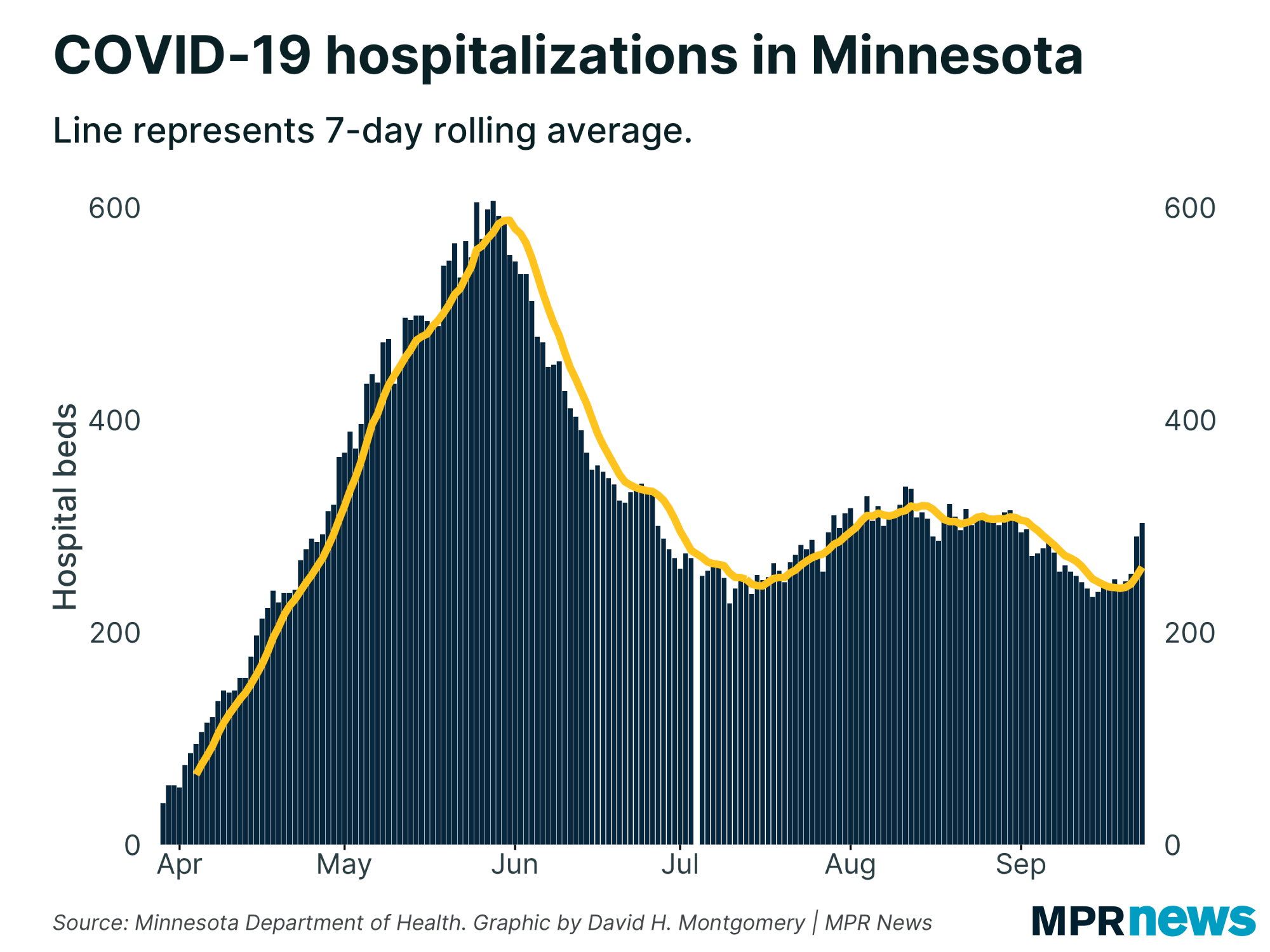
Meanwhile, after weeks of public health leaders agonizing over COVID-19’s spread at bars and restaurants, a new worry has been added to the list of possible virus spread epicenters: a rodeo.
The Health Department on Friday confirmed a person who showed up at the popular North Star Stampede in Effie in Itasca County last weekend was contagious with COVID-19 while there.
The event wasn’t an ordinary rodeo — it also served as a protest of what organizers considered government overreach in handling the pandemic.
Most attendees, who numbered well above the 250-person maximum legal gathering size, didn’t socially distance or wear masks. Now, they’re being warned warned to watch for coronavirus symptoms and get tested if they develop. In addition, Attorney General Keith Ellison is suing the rodeo’s owner.
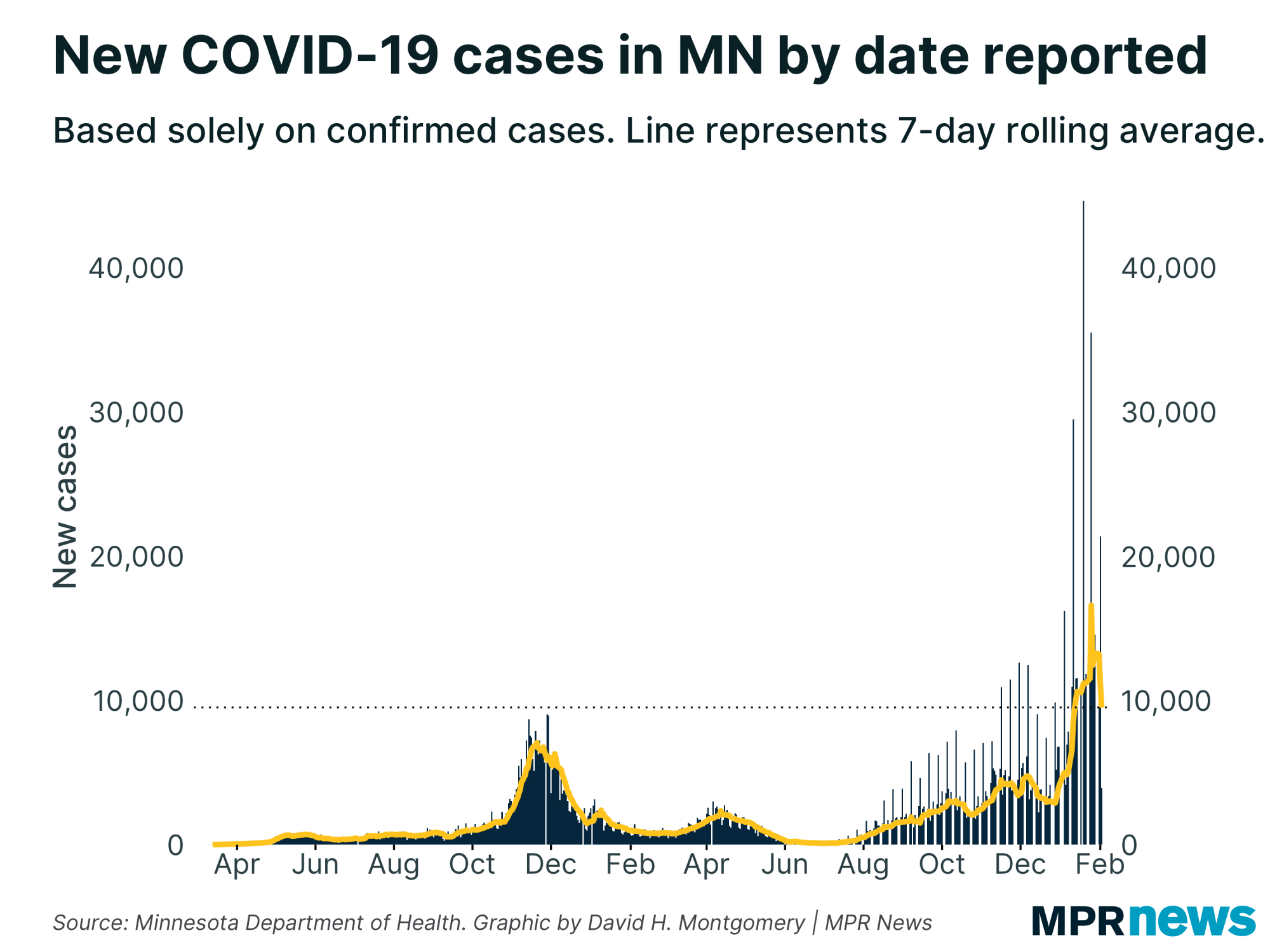
In confirming the case from the rodeo, Health Commissioner Jan Malcolm again pleaded with Minnesotans to mask up in indoor public gathering spaces, stay spaced 6 feet apart, wash hands and otherwise stay vigilant against the disease.
“I know how weary you are of hearing me say these things day after day,” she admitted at one point.
Malcolm’s remarks came hours after her agency reported COVID-19 hospitalizations had resumed their upward climb, continuing a trend that’s been worrying Minnesota public health officials for weeks.
While hospitalizations still remain far lower now than at their late-May peak, officials have been bracing Minnesotans to expect a surge following a weekslong climb in new confirmed cases. That appears to be happening.
Here are the latest coronavirus statistics:
55,188 cases confirmed (731 new) via 1,040,317 tests
1,606 deaths (6 new)
5,208 cases requiring hospitalization
317 people remain hospitalized; 149 in intensive care
48,119 patients no longer requiring isolation
Comfortable with schools plan
The newest numbers come two days after Gov. Tim Walz rolled out his "localized, data-driven” plan for returning to school in the fall.
The statewide plan calls for returning to in-person classroom teaching when possible. But the plan left districts to decide whether their school systems will start the year in buildings, online or some combination — based on their local COVID-19 conditions, which aren’t getting better in most places.
Malcolm on Friday said health officials are comfortable recommending that Minnesota schools open for young students this fall because data shows they pose a low risk of transmitting the coronavirus.
“We're more concerned about the ability for kids over the age of 15 to transmit,” she said, adding that her department will continue to monitor numbers and reassess school guidance if necessary.
Cases growing across age brackets, up north
Worries remain about the growth of coronavirus cases in younger Minnesotans, including that those infected will inadvertently spread the virus to grandparents and other more vulnerable populations.
Minnesotans in their 20s now make up the age group with the most confirmed cases in the pandemic — nearly 13,000. The median age of Minnesotans infected has been trending down in recent weeks and is now 36 years old.
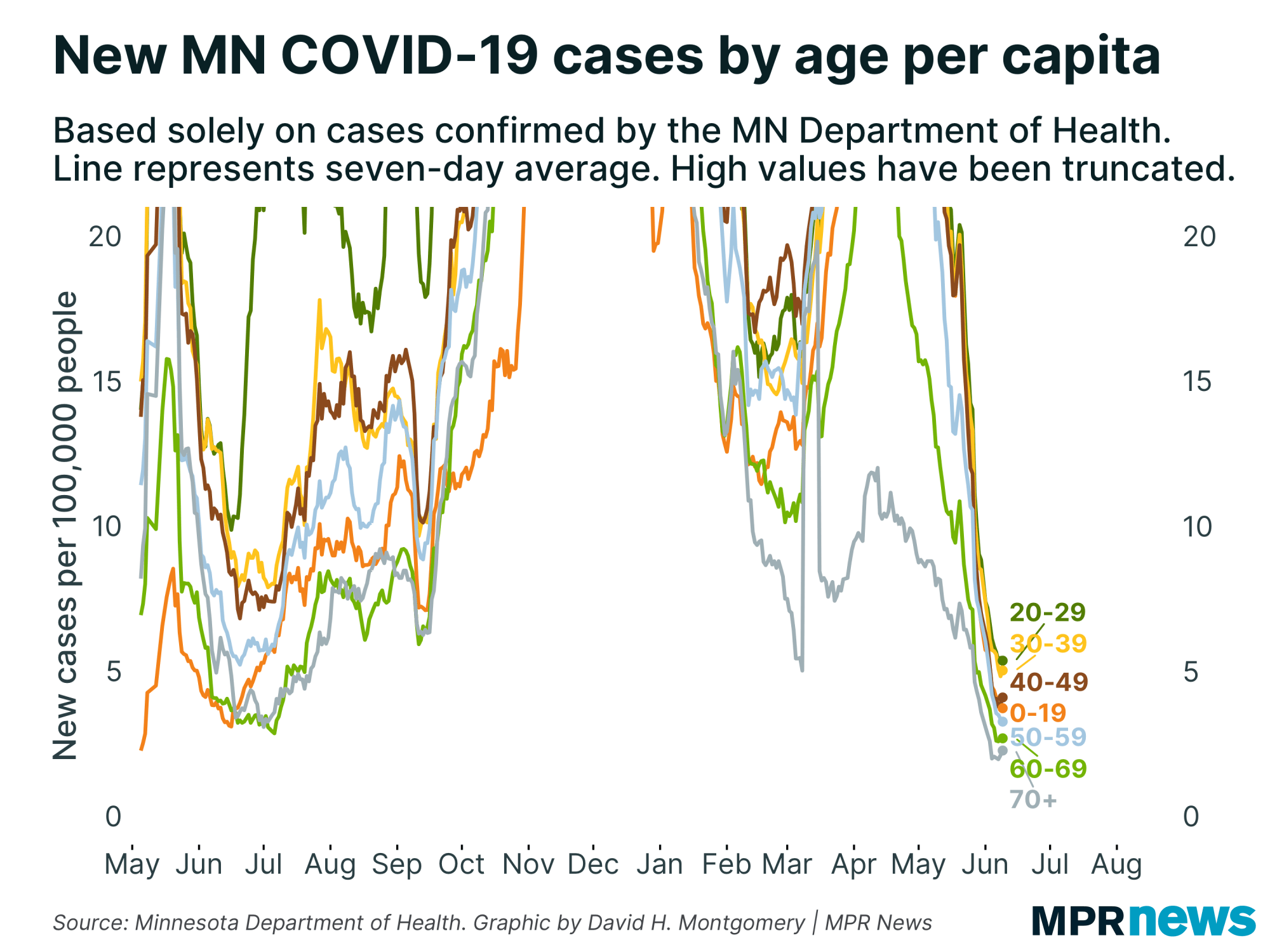
Investigators continue to see rising cases with bars and restaurants at their center and are examining outbreaks in 28 establishments, Ehresmann said this week.
“Consider all the roles you play” in all daily interactions, she cautioned, noting that people who might not worry about themselves should worry about infecting vulnerable family members and coworkers.
Regionally, newly reported cases have been driven recently by the Twin Cities and its suburbs, but it’s present in all parts of the state, including the north, which had largely avoided the outbreak until recently.
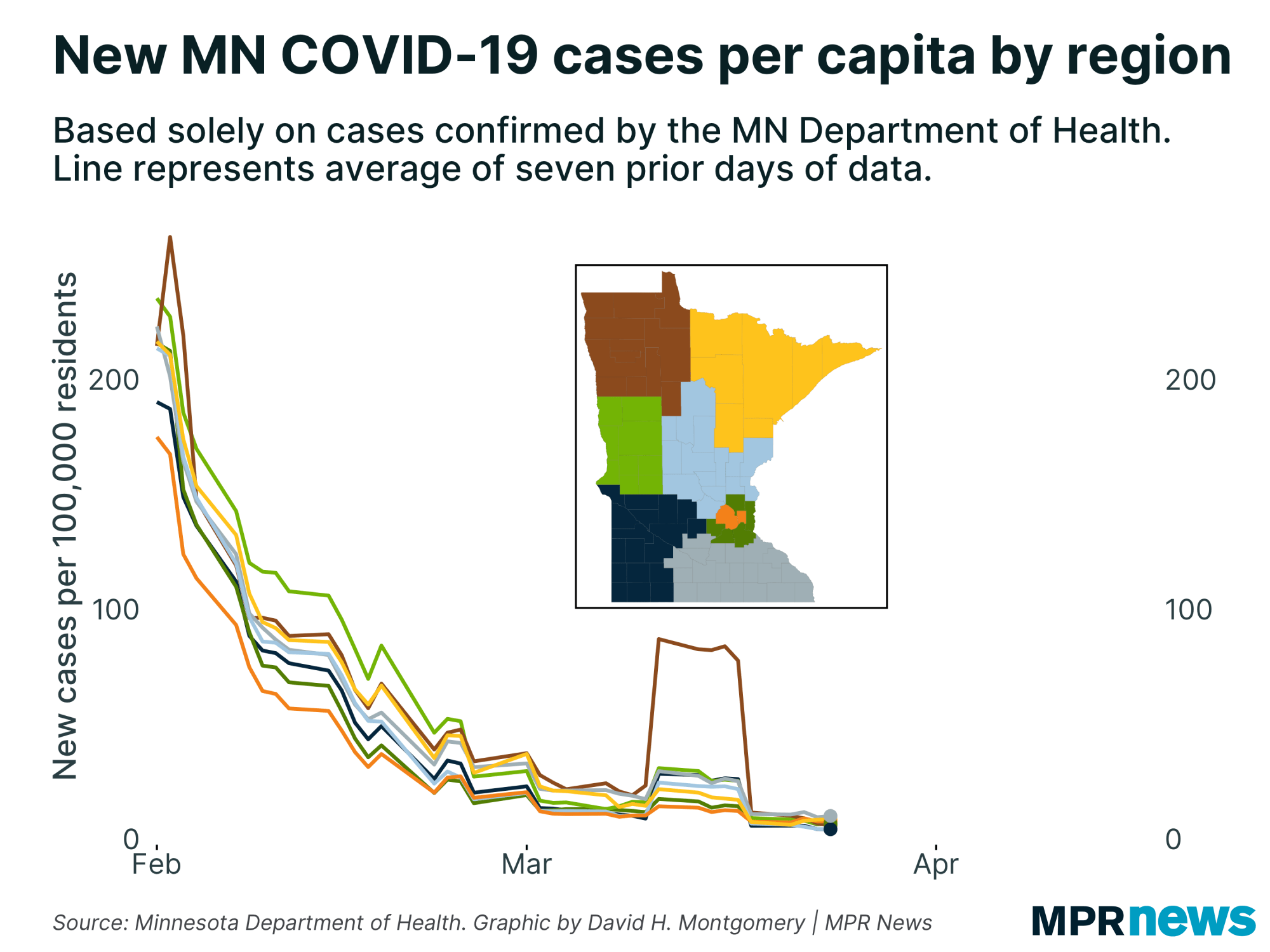
Cases in Beltrami County, home to Bemidji, have more than doubled in the past week and a half, increasing to 188 as of Saturday.
Ehresmann last week said the Beltrami case increase is tied to spread from athletic events and other public gatherings. Most of the state’s latest hot spots for the disease are in northern and central Minnesota.
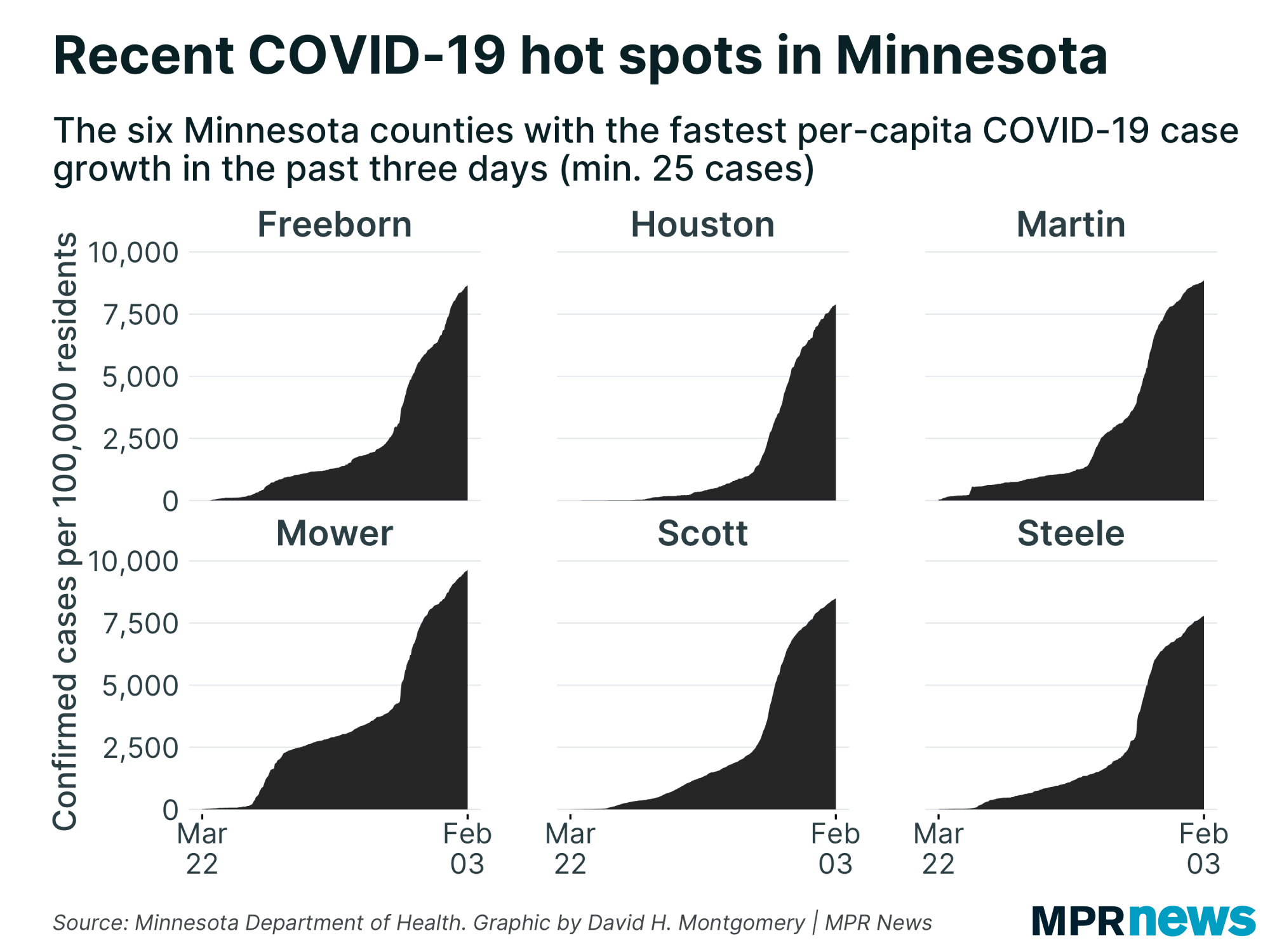
Meatpacking operations had been hot spots for big outbreaks in southwest, west-central and central Minnesota earlier in the pandemic, but new cases have slowed considerably in recent weeks.
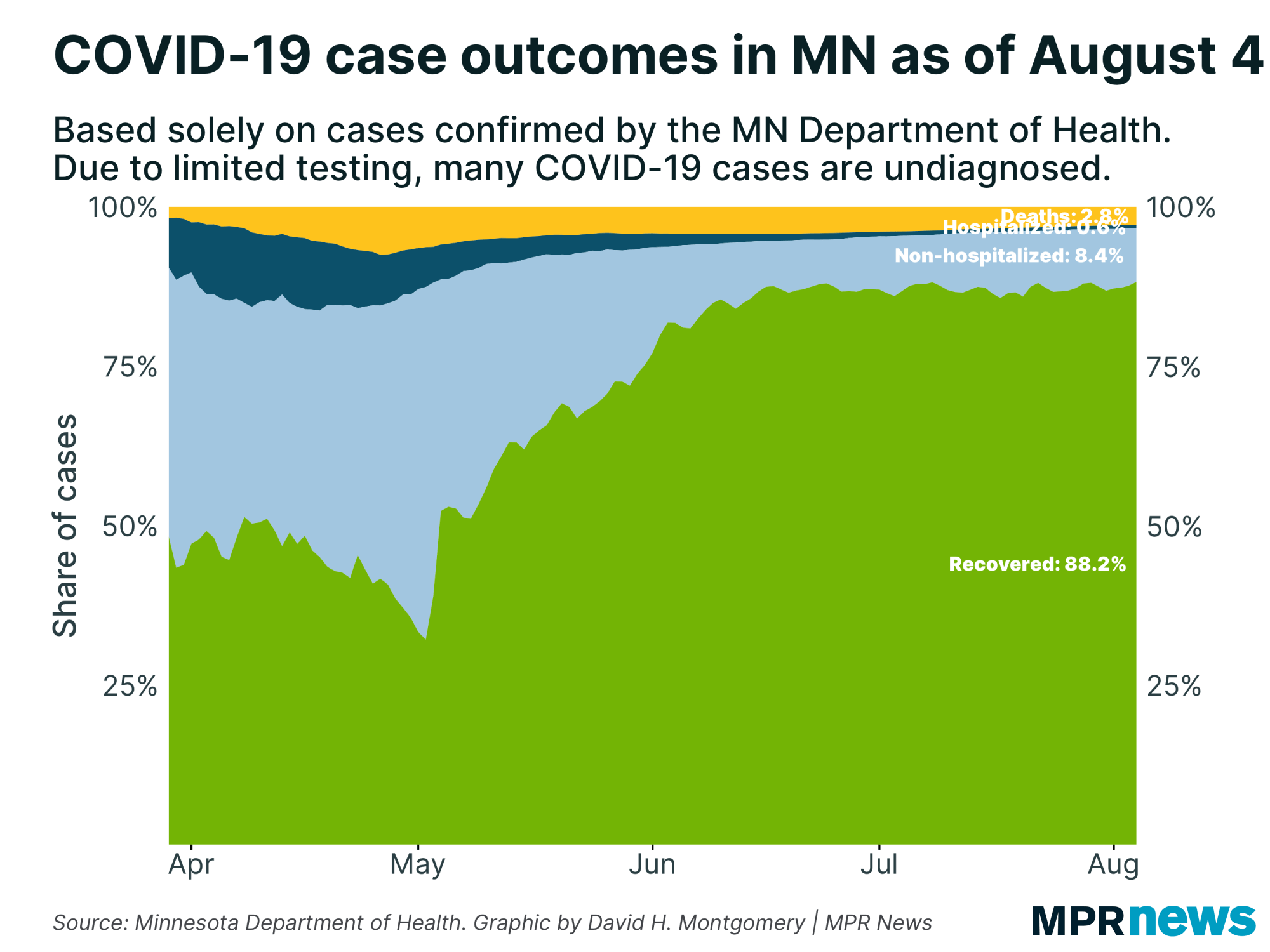
Developments from around the state
COVID-19 hit to state budget may last years
The COVID-19 pandemic could put a big dent in future state budgets.
A planning estimate released Friday by state finance officials shows a $4.7 billion revenue shortfall in fiscal years 2022 and 2023 because of the economic slowdown triggered by the pandemic.
The state is already facing a more a $2.3 billion deficit this biennium, but Minnesota Management and Budget Commissioner Myron Frans said the financial situation could change depending on the course of the virus.
"We need to see what's going to happen with COVID-19 this fall," Frans said. "And that also gives us some time to plan and make sure we make really smart strategic decisions before we have to make the long term budget decisions we'll have to face for '22 and '23."
The long-term outlook does not include any additional money the federal government might send to the states.
— Brian Bakst | MPR News
Top headlines
End of federal $600 unemployment benefit leaves Minnesotans anxious: Tens of thousands of Minnesotans who have lost their jobs due to the coronavirus pandemic have relied on an extra $600 weekly unemployment payment from the federal government to make ends meet. But that extra cash benefit expires Friday.
For Minnesotans, Walz’s school plan brings more questions than answers: With little more than guidance from the state government for how to handle the upcoming school year, many Minnesotans remain in limbo for how their lives will look in a month.
Minnesota’s rules for going back to school: State officials announced their long-awaited guidelines for how public and charter schools should plan to reopen for fall instruction in the midst of the coronavirus pandemic. What will that mean for your family, your work or your community? Here’s what you need to know.
As schools look ahead to fall, one Rochester elementary offers a glimpse of the future: Now that schools have guidance on reopening from the state, one Rochester, Minn., elementary is already in session, providing a glimpse of what the classroom could look like for many in September.
COVID-19 in Minnesota
Data in these graphs are based off Minnesota Department of Health cumulative totals released at 11 a.m. daily. You can find more detailed statistics on COVID-19 at the Health Department website.
The coronavirus is transmitted through respiratory droplets, coughs and sneezes, similar to the way the flu can spread.


